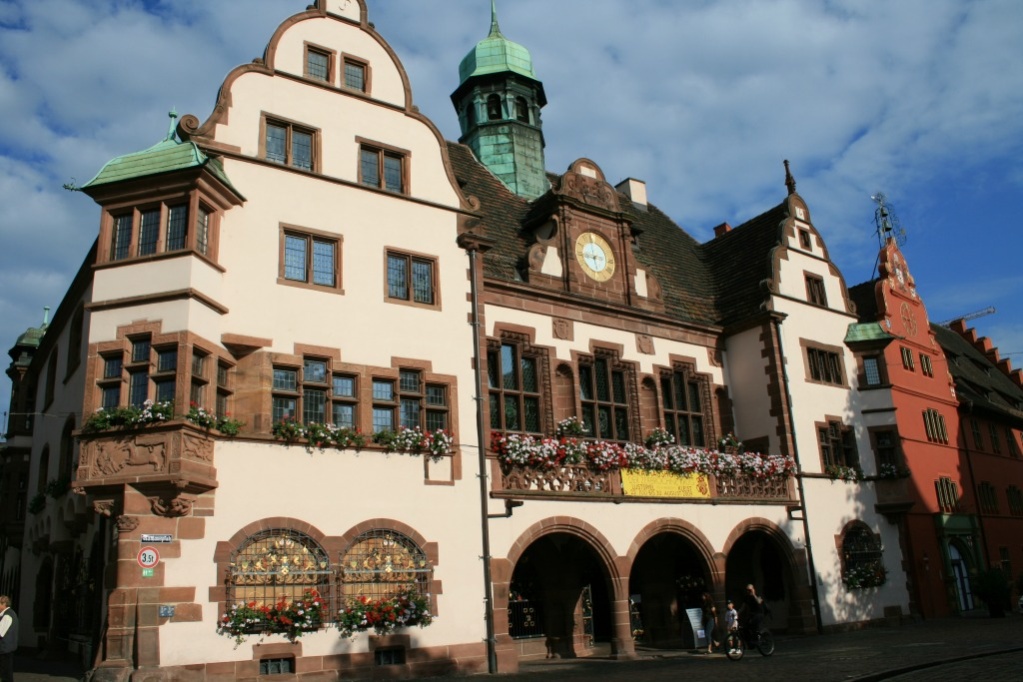Munich Germany Travel Guide A Vagabond Life
Embarking on a Journey Through Time and Culture: Exploring Munich’s Rich History and Modern Charms
Nestled in the heart of Bavaria, Germany, lies a city that effortlessly marries a rich historical legacy with a contemporary cosmopolitan vibe. Munich, often referred to as the “Gateway to the Bavarian Alps,” beckons travellers with its enchanting blend of old-world charm and modern dynamism. As you step foot on Munich’s cobbled streets and gaze upon its architectural marvels, you’re not just embarking on a typical travel adventure; you’re delving into a tapestry of centuries-old stories, cultural treasures, and vibrant urban experiences.
Unveiling Munich’s Historical Tapestry
The roots of Munich dig deep into the annals of time, tracing back to the 12th century. What once began as a modest marketplace gradually evolved into a flourishing hub of culture, art, and intellect. Over the years, the city played host to a symphony of historical events, welcoming luminaries like Wolfgang Amadeus Mozart and Johann Wolfgang von Goethe within its artistic embrace.
Walking through Munich’s streets is akin to taking a step back in time. The Nymphenburg Palace, an opulent Baroque masterpiece, stands as a testament to the opulence of Bavarian royalty. The Frauenkirche, with its distinctive twin towers, serves as a silent witness to the city’s enduring faith and resilience, having survived centuries of change and upheaval.
Join us as we explore the vibrant streets and discover the unique blend of tradition and innovation that defines this captivating city.
Munich Germany Map
Getting To Munich Germany
Munich, the capital of Bavaria, is one of Germany’s most accessible and well-connected cities. Whether you’re coming from another part of Germany, a neighboring European country, or further afield, getting to Munich is straightforward thanks to its extensive transport network. Here’s a look at the various modes of transport available to reach Munich:
By Air: Munich Airport (MUC)
Munich Airport, also known as Franz Josef Strauss International Airport, is one of Europe’s busiest and most modern airports. It’s located about 28 kilometers northeast of the city center, making it a convenient entry point for international and domestic travelers. Numerous airlines offer direct flights to Munich from major cities worldwide, including New York, London, Paris, Dubai, and Tokyo. From the airport, you can easily reach the city center by train, bus, taxi, or car rental.
By Train: Hauptbahnhof Munich
Munich’s Hauptbahnhof (Central Station) is one of the busiest in Europe, with high-speed trains (ICE, TGV, EuroCity) connecting the city to major destinations across Germany and neighboring countries like Austria, Switzerland, Italy, and France. Traveling by train offers a comfortable and scenic route to Munich, especially if you’re coming from cities like Berlin, Vienna, Zurich, or Prague. The station is centrally located, making it easy to start exploring Munich as soon as you arrive.
By Car: Driving to Munich
Driving to Munich is an excellent option if you prefer flexibility and want to explore the Bavarian countryside at your own pace. The city is well-connected to Germany’s autobahn network, with major routes like the A8, A9, and A96 leading directly to Munich. Renting a car allows you to stop at charming towns and villages along the way, turning your journey into an adventure.
By Bus: Long-Distance Coaches
Long-distance buses offer an affordable and increasingly popular way to get to Munich. Companies like FlixBus, Eurolines, and BlaBlaCar Bus provide regular services from major European cities such as Berlin, Vienna, Milan, and Budapest. Buses typically arrive at the Munich Central Bus Station (ZOB), which is located near the Hauptbahnhof, making it easy to continue your journey into the city.
Getting Around Munich Germany
Getting Around Munich: Navigating the City
Once you’ve arrived in Munich, you’ll find that getting around the city is both easy and enjoyable. Munich offers a variety of transportation options to suit every traveler’s needs, whether you prefer public transport, cycling, or simply walking. Here’s a guide to the best ways to explore Munich:
Public Transportation: U-Bahn, S-Bahn, Trams, and Buses
Munich boasts an efficient and comprehensive public transportation system, including the U-Bahn (subway), S-Bahn (suburban trains), trams, and buses. The entire network is integrated, meaning one ticket allows you to switch between different modes of transport. The U-Bahn and S-Bahn are the quickest ways to travel across the city, while trams offer a scenic way to see the sights. Buses are a great option for reaching areas not covered by trains or trams. The MVV (Munich Transport and Tariff Association) manages all these services, offering various ticket options, including single-ride, day passes, and group tickets.
By Bicycle: Exploring Munich on Two Wheels
Munich is a bike-friendly city with an extensive network of cycling paths. Renting a bike is a great way to explore the city at your own pace, especially during the warmer months. Many locals use bikes for their daily commute, and you’ll find bike lanes on most major streets. The city’s relatively flat terrain makes cycling a comfortable option for travelers of all ages.
On Foot: Discovering Munich’s Walkable Charm
Munich is a pedestrian-friendly city, and many of its top attractions are located within walking distance of each other. The historic city center, including Marienplatz, the Residenz, and the Viktualienmarkt, is best explored on foot. Walking allows you to soak in the city’s atmosphere, admire its stunning architecture, and discover hidden gems along the way.
By Car: Driving in Munich
While Munich’s public transportation is excellent, renting a car can be convenient if you plan to explore the surrounding areas or if you’re traveling with a group. The city’s roads are well-maintained, and parking is generally available, although it can be expensive in the city center. Munich also has several car-sharing services, such as Share Now and SIXT, which offer a flexible alternative to traditional car rentals.
Taxis and Ride-Sharing: Convenient Options
Taxis are readily available throughout Munich and can be hailed on the street, booked by phone, or via an app like Free Now. Ride-sharing services like Uber also operate in Munich, providing a convenient alternative to traditional taxis. Both options are more expensive than public transport but offer added convenience, especially late at night or when traveling with heavy luggage.
Electric Scooters: A Fun and Quick Way Around
Electric scooters have become a popular way to get around Munich, especially for short distances. Companies like Lime, TIER, and Voi offer scooter rentals throughout the city, allowing you to pick up and drop off scooters at various locations. Scooters are a fun and efficient way to zip through the city, particularly in pedestrian areas and parks.
Munich’s mix of traditional charm and modern convenience makes it a joy to explore. Whether you prefer the speed of the U-Bahn, the leisurely pace of a bike ride, or the simple pleasure of walking, Munich has a transportation option that suits your style.
Things To See & Do In Munich Germany
Deutsches Museum: Munich Technical Museum
Exploring the Wonders of Science and Technology: Deutsches Museum in Munich
Nestled on an island in the heart of the Isar River, the Deutsches Museum in Munich stands as a captivating tribute to human innovation and scientific exploration. As one of the world’s oldest and largest science and technology museums, it beckons curious minds to embark on a journey through the realms of physics, engineering, astronomy, and more. With an impressive collection that spans from ancient artifacts to cutting-edge advancements, the museum offers a dynamic tapestry of interactive exhibits, historical artifacts, and hands-on experiences that celebrate the marvels of human creativity and ingenuity.
Address: Deutsches Museum, Museumsinsel 1, 80538 Munich, Germany
From aviation to telecommunications, from medicine to space exploration, the Deutsches Museum provides an immersive portal into the evolution of human knowledge and technological prowess. Visitors can marvel at early steam engines, delve into the mysteries of the cosmos at the Planetarium, or witness the birth of computing through historic machines. The museum’s dedication to both historical context and contemporary relevance creates an inspiring fusion of past and present, fostering a deeper understanding of how science and technology shape our world. Whether you’re a dedicated science enthusiast, a curious learner, or simply seeking a captivating exploration, the Deutsches Museum offers an enriching voyage through the realms of human achievement and progress.
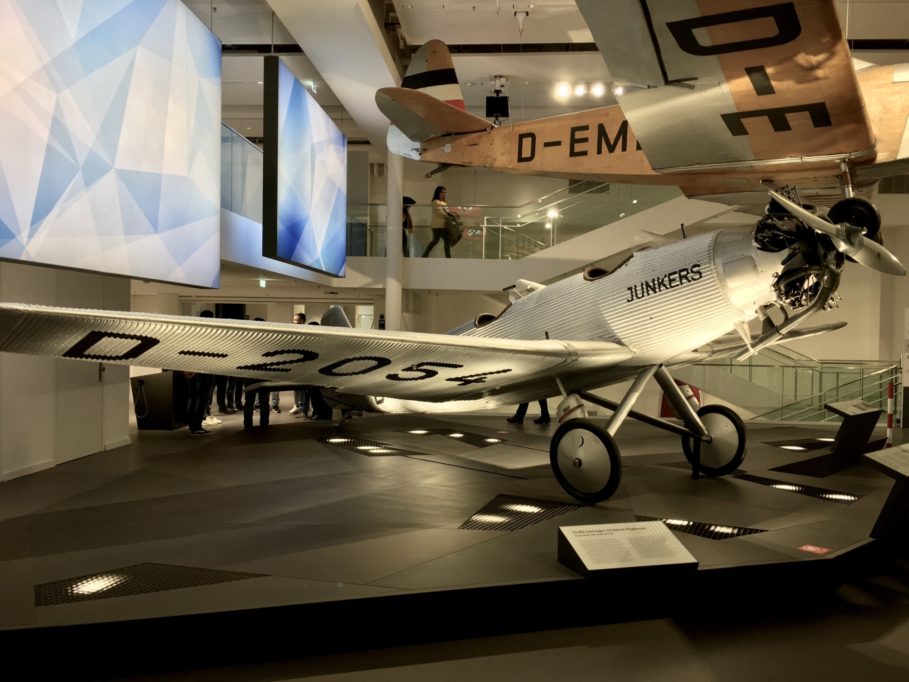
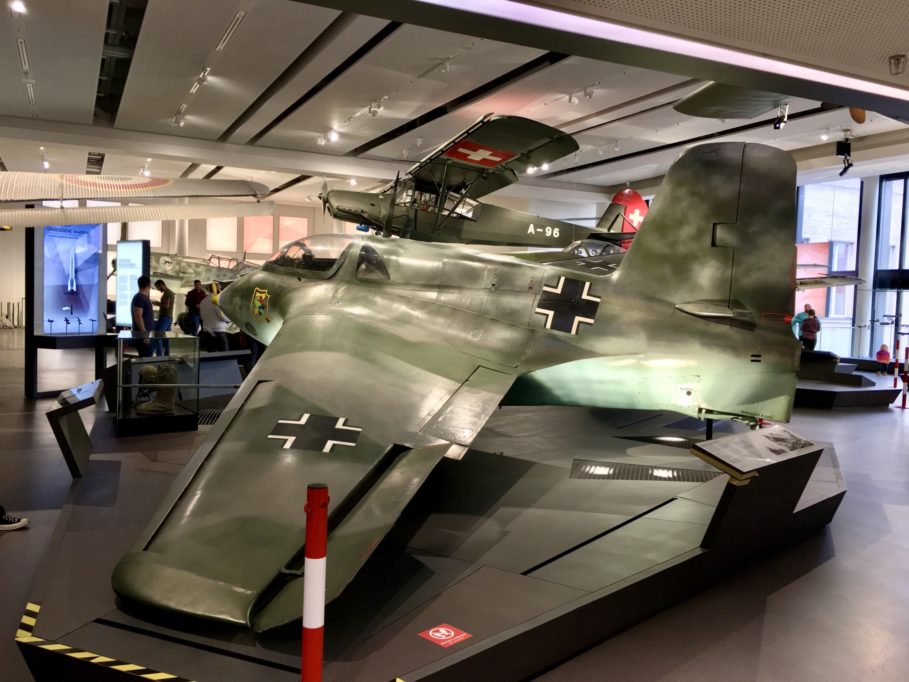
Munich Christmas Markets
Christmas Markets: If you visit during the winter season, Munich’s Christmas markets are a must-see. The Marienplatz market, in particular, boasts dazzling lights, traditional crafts, and heartwarming treats that capture the essence of the holiday spirit.
Munich is renowned for its enchanting Christmas markets that come to life during the holiday season. Here is a list of some of the notable Christmas markets in Munich:
Christkindlmarkt at Marienplatz: Located in the heart of Munich, this iconic market features a towering Christmas tree and a festive atmosphere. Traditional crafts, ornaments, and delicious Bavarian treats abound.
Tollwood Winter Festival: This diverse festival combines a Christmas market with a focus on sustainable and artistic offerings. Live music, cultural performances, and a bohemian vibe create a unique experience.
Sendlinger Tor Christmas Market: Situated near Sendlinger Tor, this market showcases handcrafted gifts, decorations, and culinary delights. It’s a charming spot for holiday shopping.
Münchner Freiheit Christmas Market: Nestled at Münchner Freiheit square, this market offers a cozy ambiance with stalls selling crafts, gifts, and culinary treats.
Kripperlmarkt at Rindermarkt: Specializing in nativity scenes and figurines, this market at Rindermarkt is a haven for those seeking unique Christmas decorations.
Schwabing Christmas Market: Held in the bohemian Schwabing district, this market features local crafts, holiday foods, and a warm community atmosphere.
Haidhausen Christmas Market: Set against the backdrop of the historic Weißenburger Platz, this market boasts a festive ambiance with crafts, gifts, and seasonal foods.
Chinese Tower Christmas Village: Located in the Englischer Garten, this market offers a mix of traditional and international goods, accompanied by a merry-go-round and live music.
Pink Christmas Market: This LGBTQ+ friendly market at Stephansplatz embraces diversity and offers unique crafts, entertainment, and a welcoming atmosphere.
Weihnachtsdorf der Residenz: Situated in the courtyard of the Munich Residenz, this market features high-quality crafts, art, and seasonal treats in a historic setting.
These markets, each with its own distinct character and offerings, contribute to Munich’s enchanting holiday atmosphere and provide visitors and locals alike with a festive way to celebrate the Christmas season.
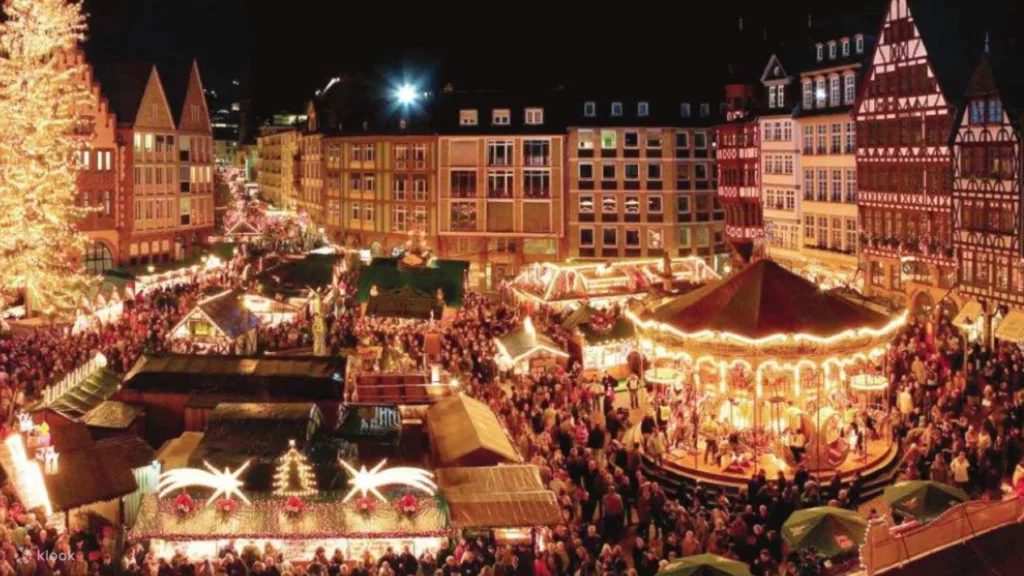
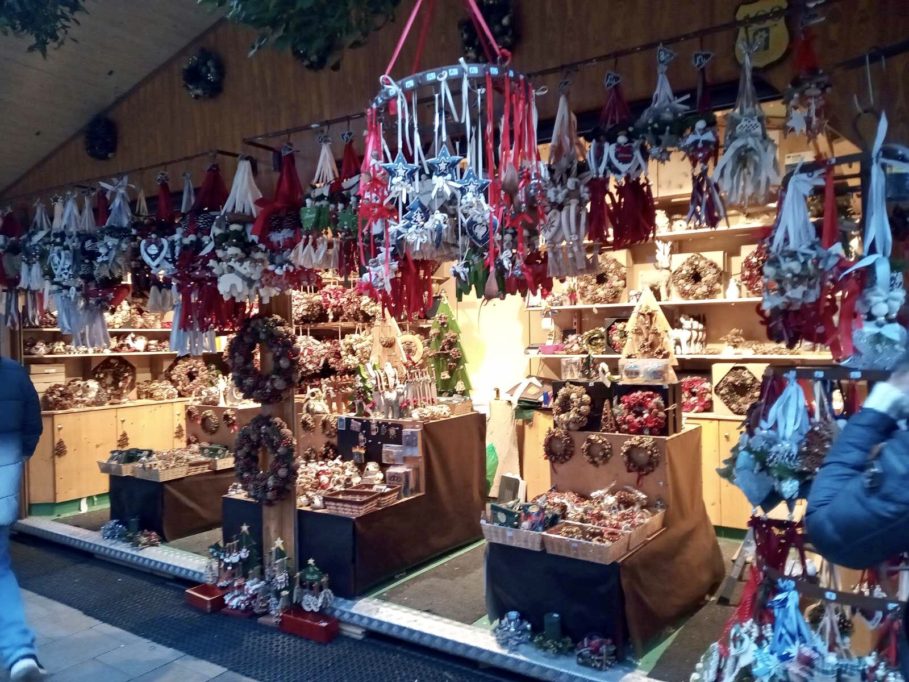
Nypmhenburg Palace Munich
Nymphenburg Palace: A Regal Overture to Bavaria’s Past
Nestled amidst the idyllic landscapes of Munich, Germany, Nymphenburg Palace stands as an exquisite testament to the opulence and grandeur of Bavaria’s historical legacy. This majestic Baroque palace, with its ornate façade and sprawling gardens, serves as a window into the lives of royalty and nobility that once graced its halls. As you step through its grand gates, you are transported back in time to an era of extravagance, artistry, and refined taste.
Built as a summer residence for the Wittelsbach family, Nymphenburg Palace’s origins trace back to the 17th century. What began as a modest hunting lodge evolved into an architectural masterpiece, reflecting the changing tastes and styles of its various occupants over the centuries. The palace’s intricate details, from the stately Great Hall to the delicate porcelain rooms, bear witness to the artisans’ craftsmanship that brought it to life.
Nymphenburg’s allure extends beyond its impressive interiors. The palace is ensconced within sprawling gardens and tranquil parklands, inviting visitors to stroll along tree-lined avenues, admire ornamental lakes, and lose themselves in the charm of hidden pavilions. The Great Parterre, an expansive formal garden adorned with fountains and sculptures, is a visual symphony that beckons exploration.
As you embark on a journey through Nymphenburg Palace, you tread in the footsteps of monarchs and luminaries who shaped history. Its halls resonate with stories of political intrigue, cultural pursuits, and moments of respite from the demands of royal life. Whether you are captivated by its architectural finesse, its rich heritage, or simply seeking to immerse yourself in a bygone era, Nymphenburg Palace promises a regal sojourn that transcends time and offers a glimpse into Bavaria’s aristocratic past.
How To Get To Nyphenburg Palace
To get to Nymphenburg Palace in Munich, Germany, you have several transportation options, depending on your starting point and preferences. Nymphenburg Palace is located about 5 kilometers west of Munich’s city center. Here’s how you can reach it:
Public Transportation:
- Tram: Take tram line 17 from Munich’s city center (e.g., Karlsplatz/Stachus) towards Amalienburgstraße. Get off at the “Schloss Nymphenburg” stop, which is directly in front of the palace’s main entrance.
- Bus: Bus line 51 also goes to Nymphenburg Palace. Take it from the central station (Hauptbahnhof) or other stops along the route to reach the palace.
Bicycle:
- Munich is a bike-friendly city, and you can easily cycle to Nymphenburg Palace. There are dedicated bike lanes and paths that can take you directly to the palace grounds.
Car:
- If you’re driving, you can use GPS to navigate to “Schloss Nymphenburg” or use the address “Schloss Nymphenburg 1, 80638 Munich, Germany.” Parking is available nearby.
Walking:
- Depending on your location, you can also enjoy a leisurely walk to the palace. It might take longer, but it can be a pleasant way to experience the city.
Before you go, it’s always a good idea to check the current schedules and routes of public transportation to ensure a smooth journey. Nymphenburg Palace is a magnificent destination, known for its stunning architecture, beautiful gardens, and historical significance. Enjoy your visit!

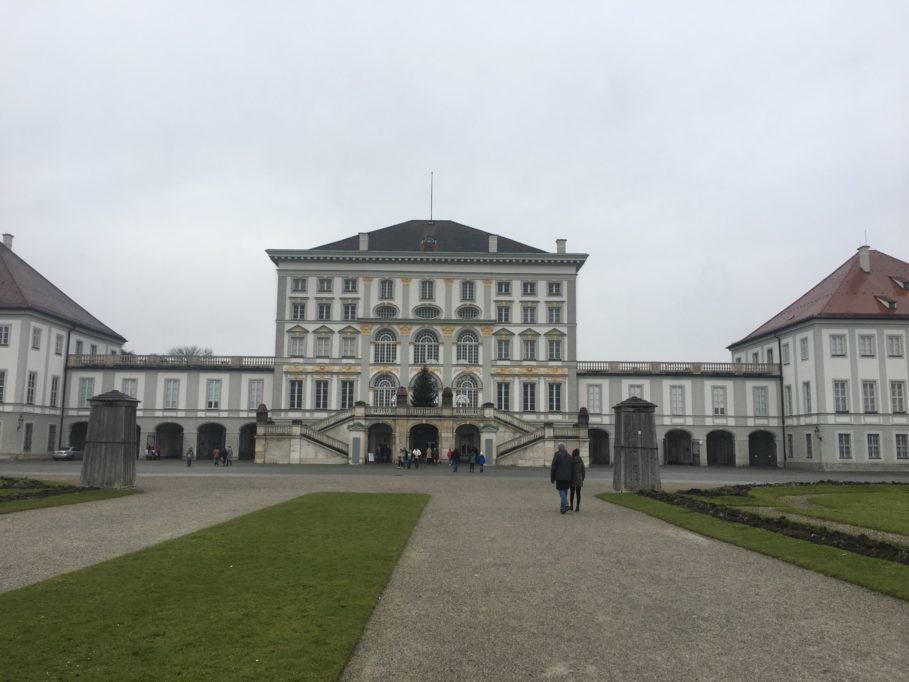
Munich Brauhaus
Discovering Munich’s Brauhaus Culture: A Toast to Tradition and Craftsmanship
Munich’s beer halls are legendary institutions that embody the city’s rich cultural heritage and convivial spirit. These hallowed halls, often adorned with traditional Bavarian décor, offer more than just a place to enjoy a pint; they serve as vibrant social hubs where locals and visitors come together to share in the joy of camaraderie, hearty laughter, and of course, exceptional beer. Stepping into a Munich beer hall, such as the iconic Hofbräuhaus or the charming Augustinerbräu, is like immersing oneself in a centuries-old tradition where the clinking of steins, the aroma of pretzels, and the lively oompah music create an ambiance of authentic merriment. It’s not just about the brew, but the experience of being part of a time-honored ritual that celebrates the heartwarming blend of community, culture, and the unmistakable taste of Bavaria.
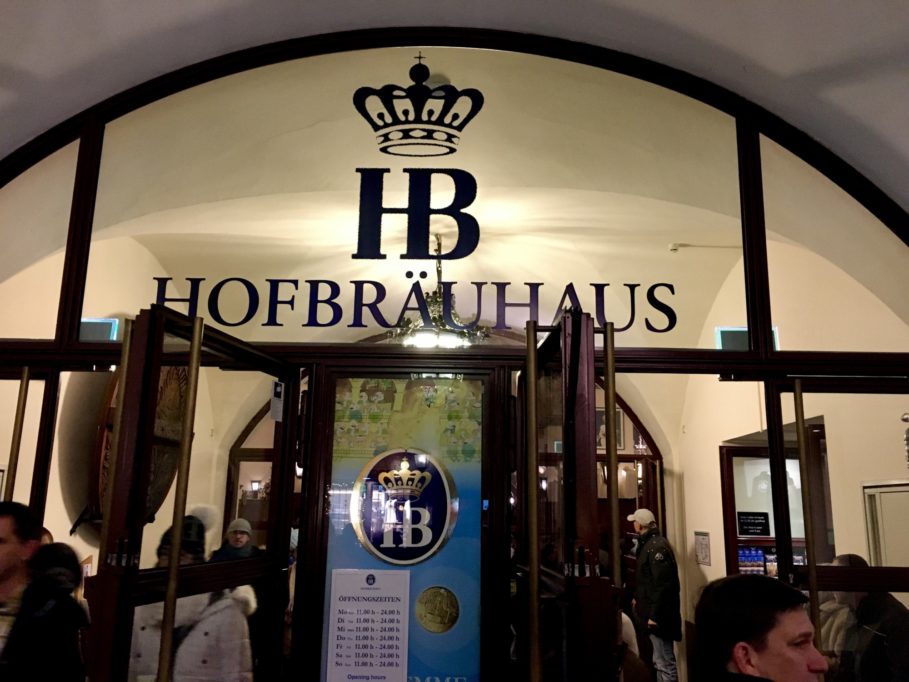
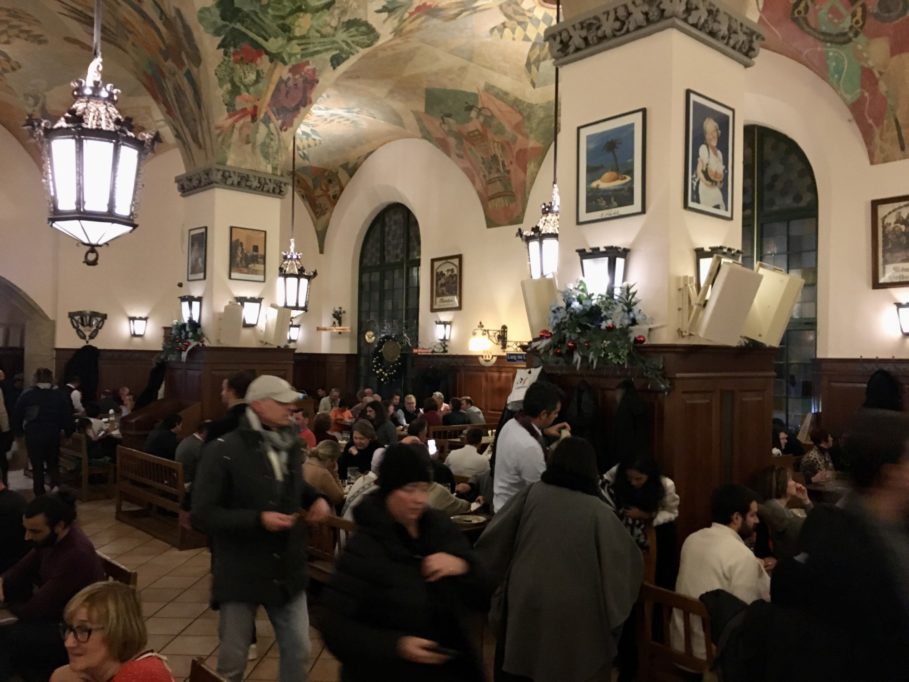
Viktualienmarkt
Viktualienmarkt: Delight your senses at this bustling open-air market, where you can savor fresh produce, cheeses, meats, and local delicacies. It’s a food lover’s paradise.
Englischer Garten
Englischer Garten: Escape the city buzz in this sprawling urban park. Rent a paddleboat on the serene lake, watch surfers riding the Eisbach wave, or simply enjoy a leisurely stroll amidst lush greenery.
BMW Welt and Museum
BMW Welt and Museum: For car enthusiasts, the BMW complex is a must-visit. Discover the history of this iconic brand through its exhibits and get up close with the latest models.
Alte Pinakothek
Alte Pinakothek: Art lovers will be captivated by this museum’s extensive collection of European paintings from the Middle Ages to the 18th century, featuring works by renowned artists.
Olympiapark
Olympiapark: Built for the 1972 Summer Olympics, this architectural marvel now hosts concerts, events, and boasts a tower with panoramic views of the city.
St. Peter’s Church
St. Peter’s Church: Climb the tower of Munich’s oldest church for breathtaking views of the cityscape. The church’s interior, with its intricate frescoes, is equally awe-inspiring.

